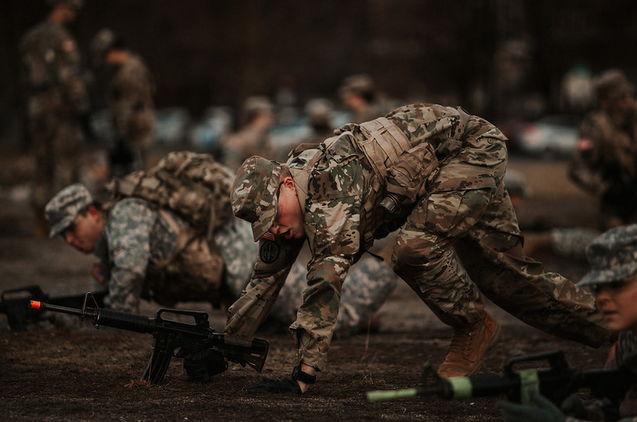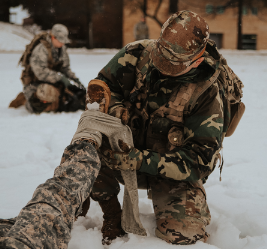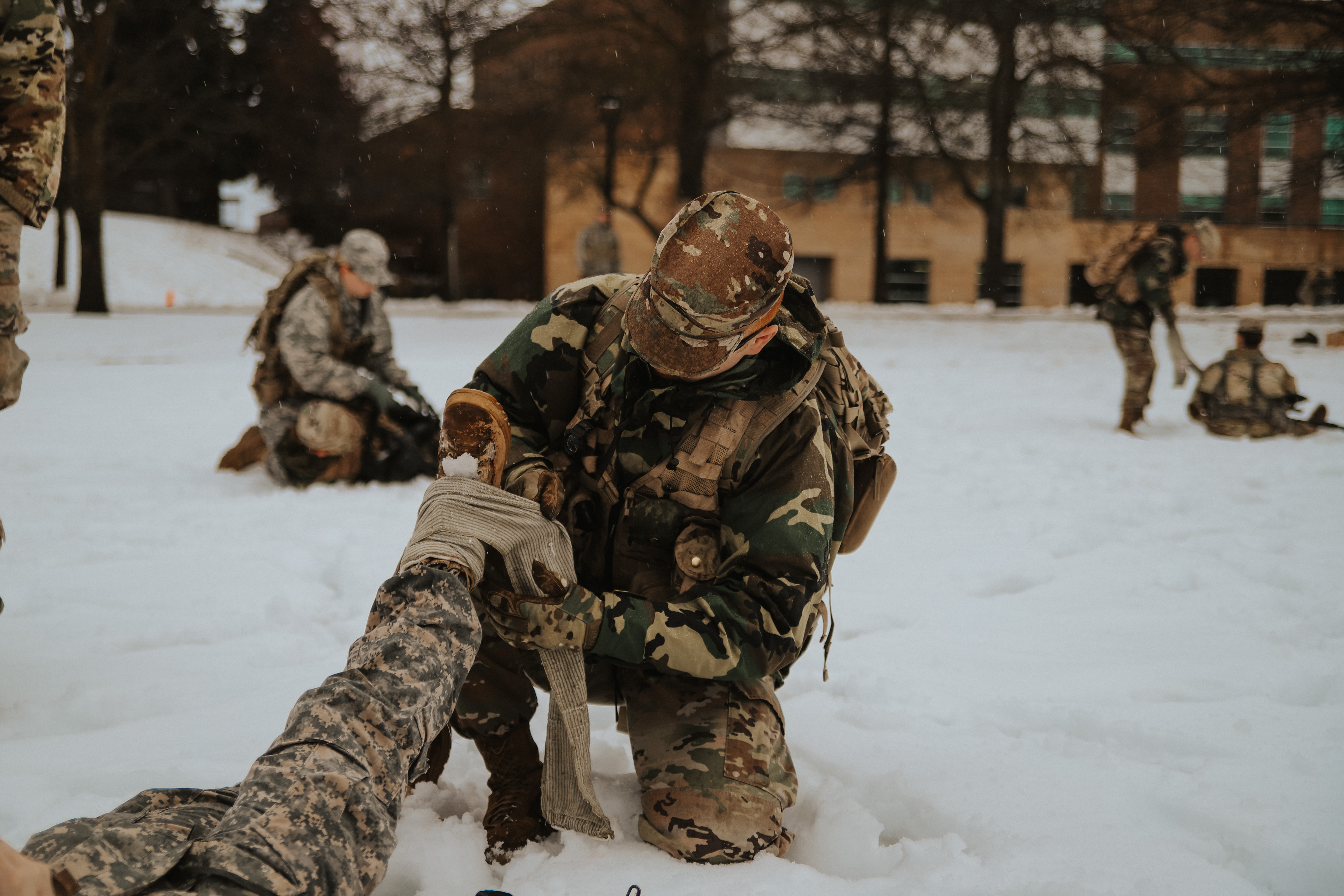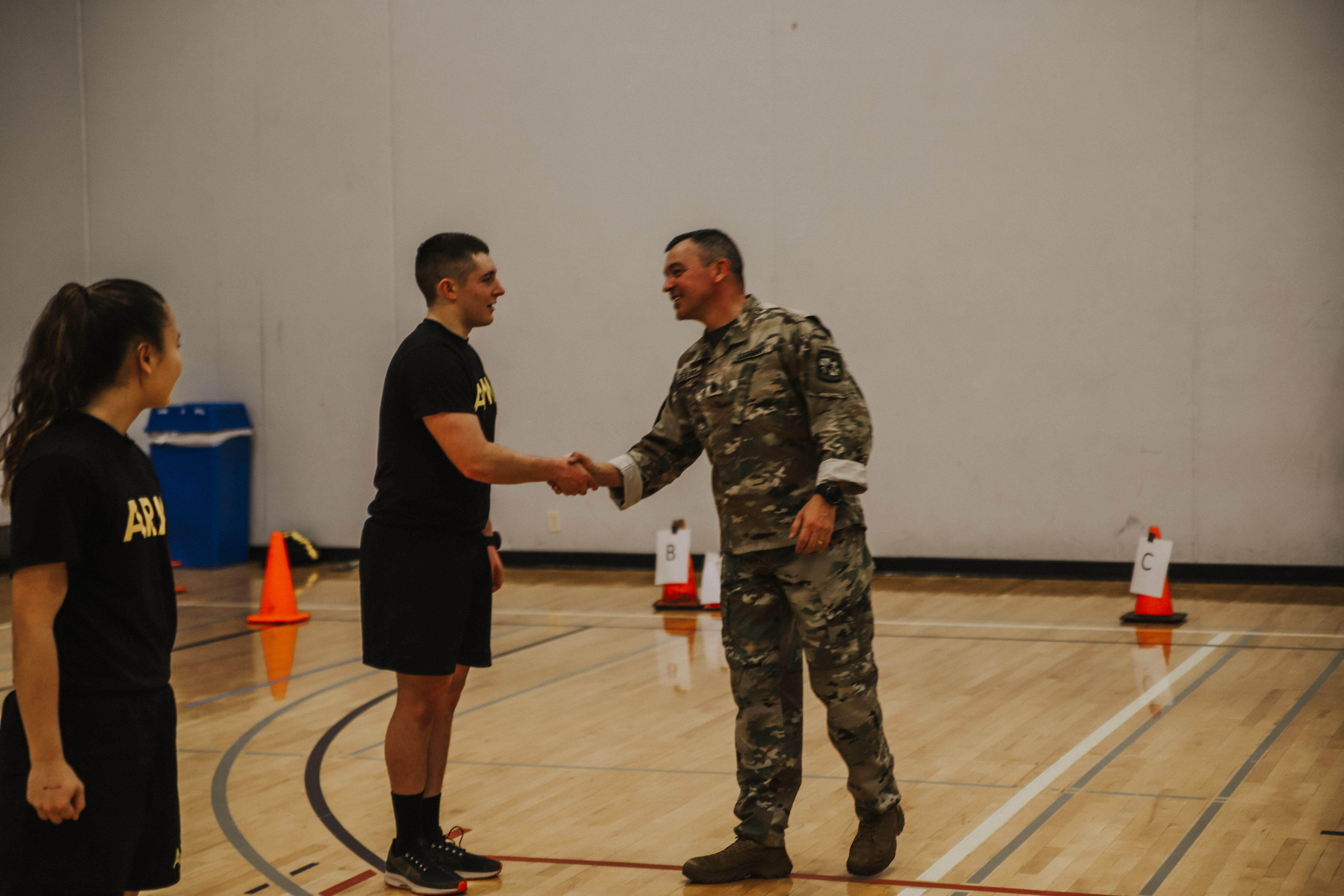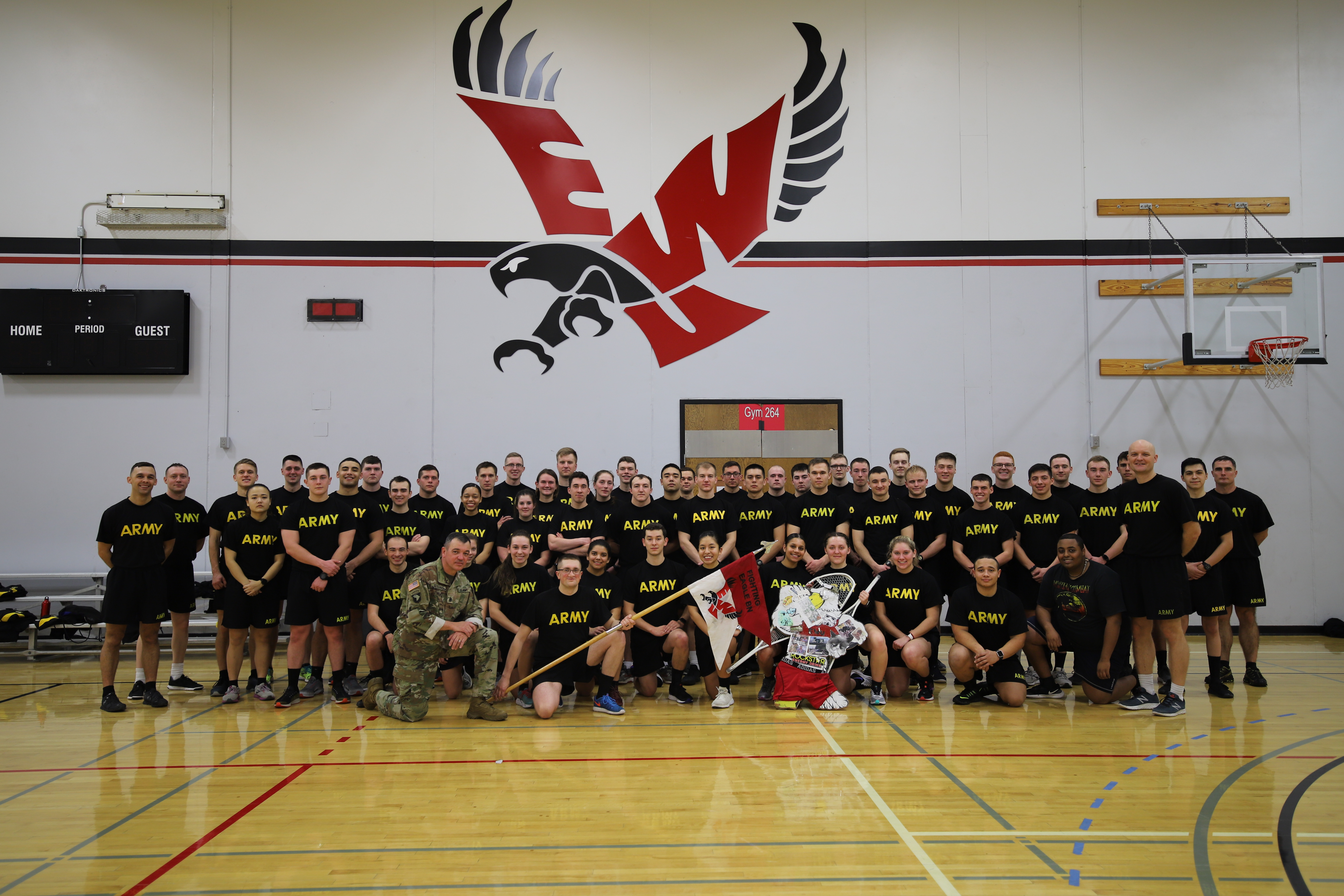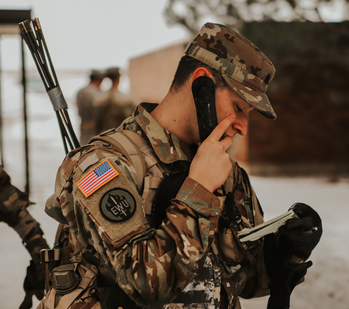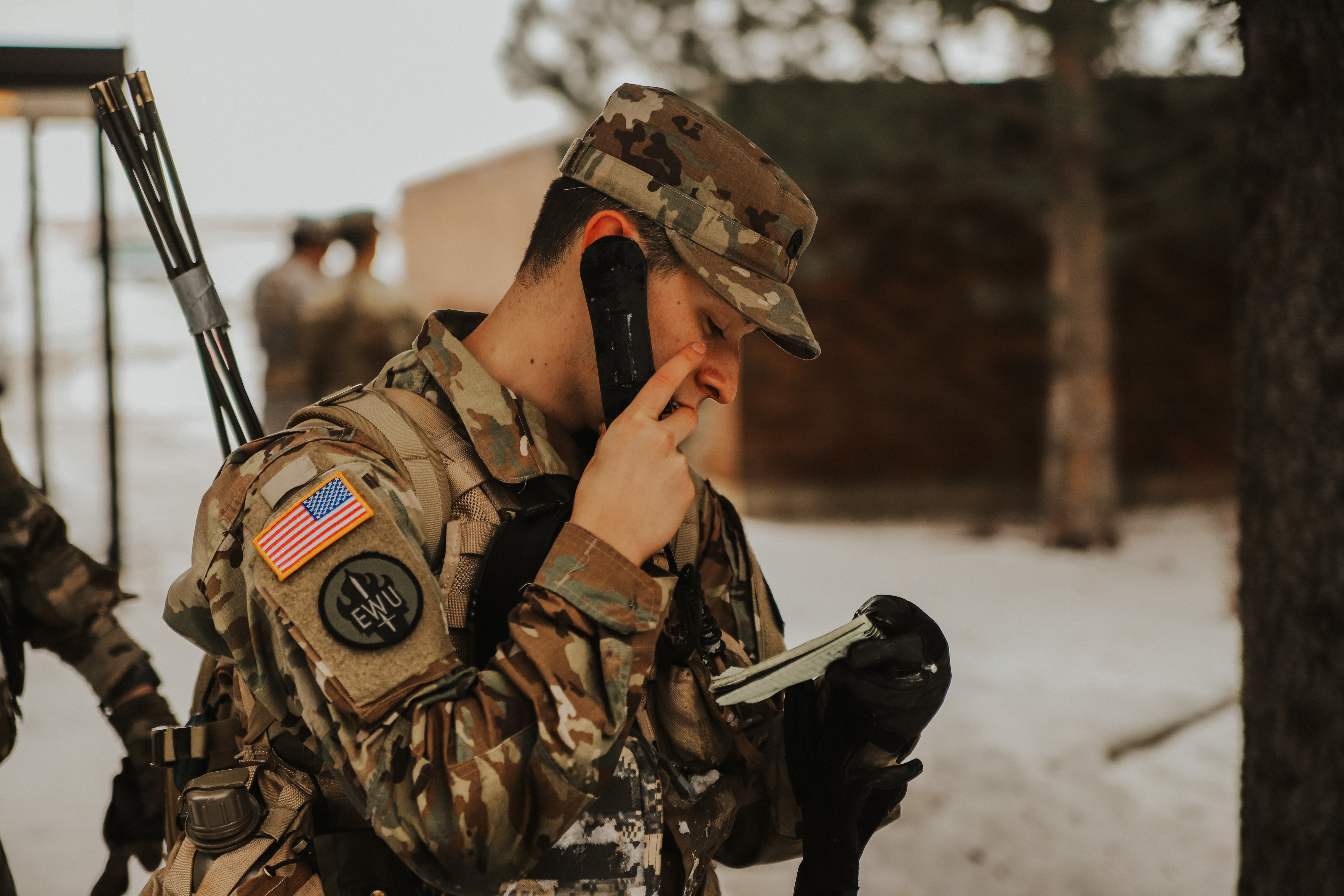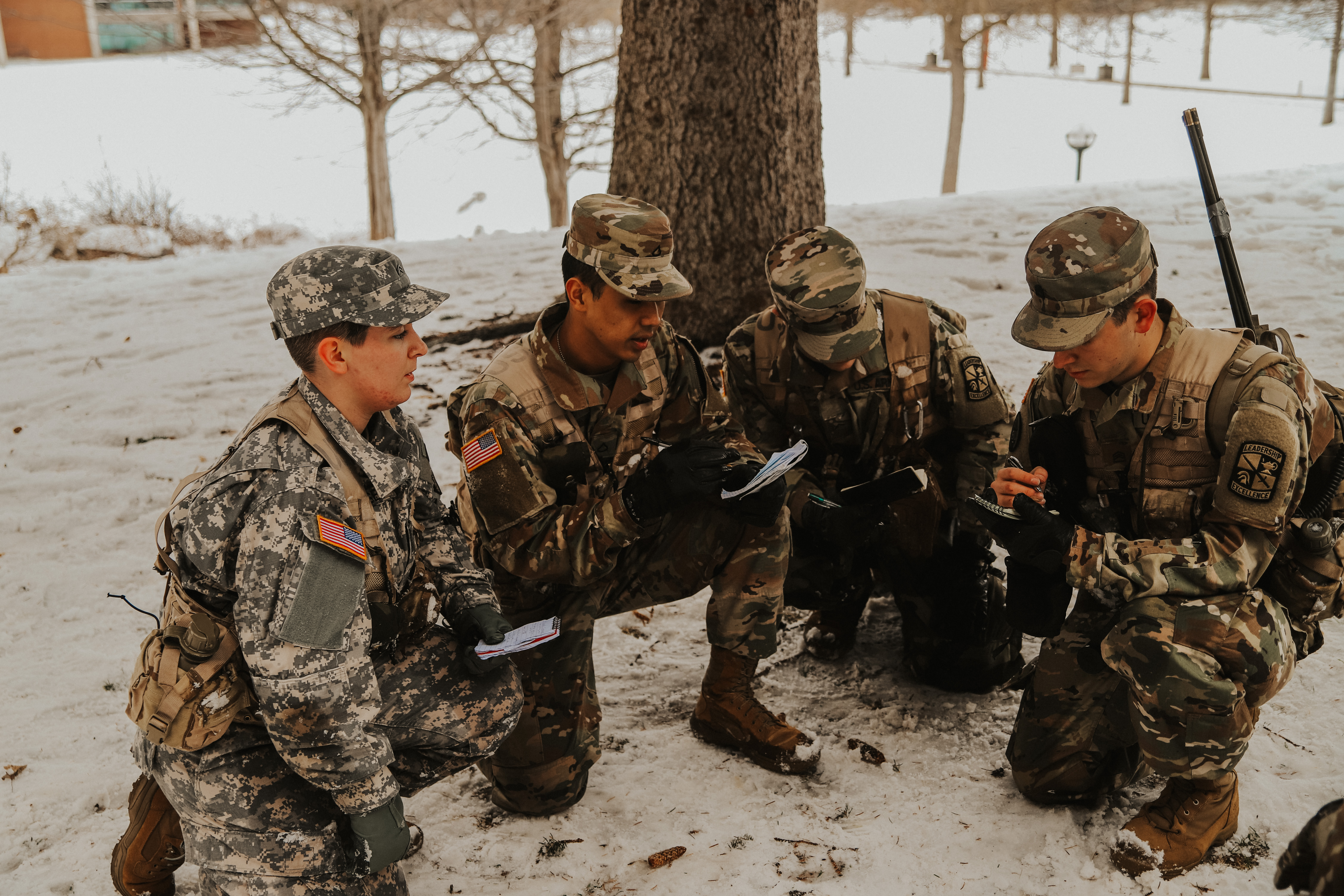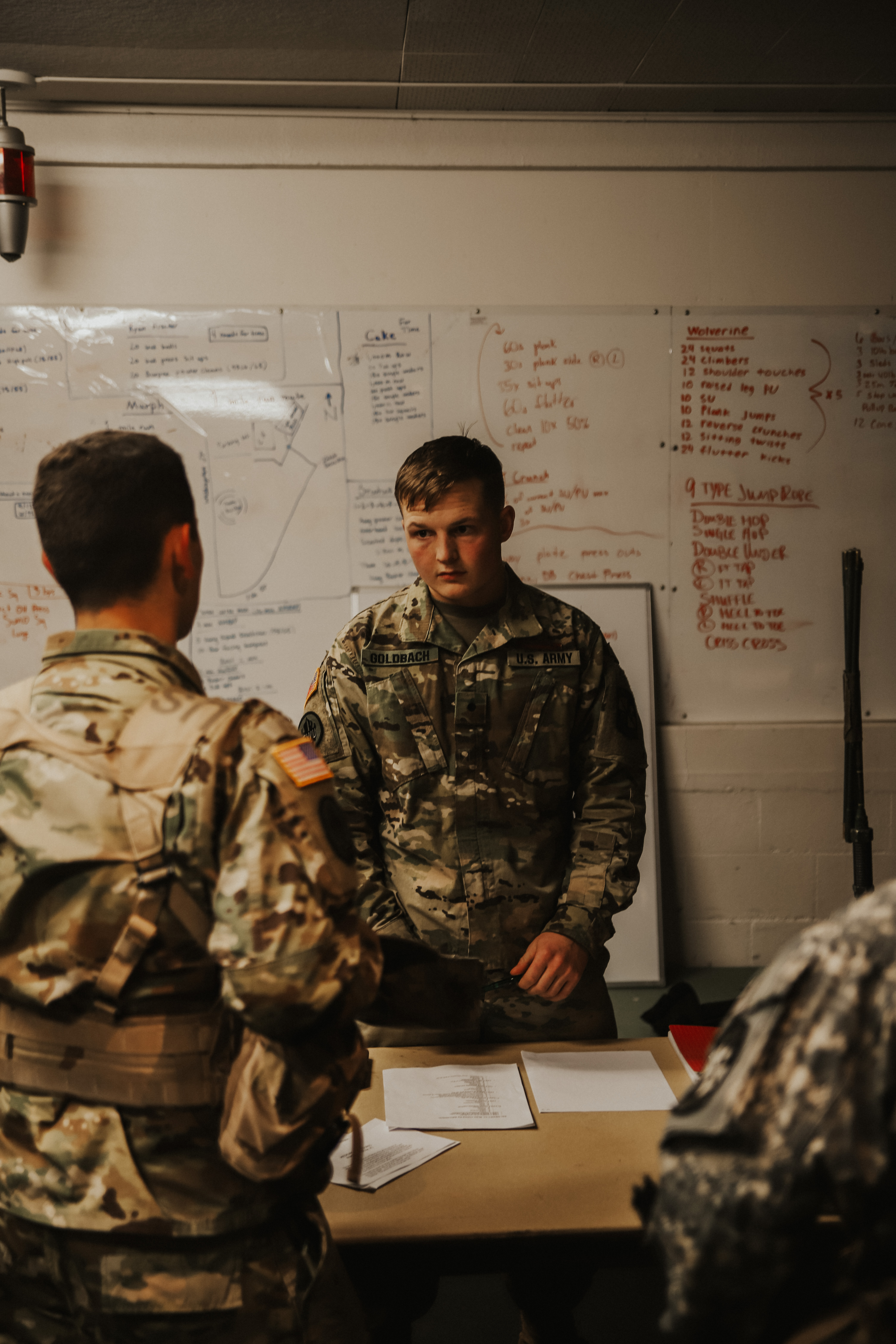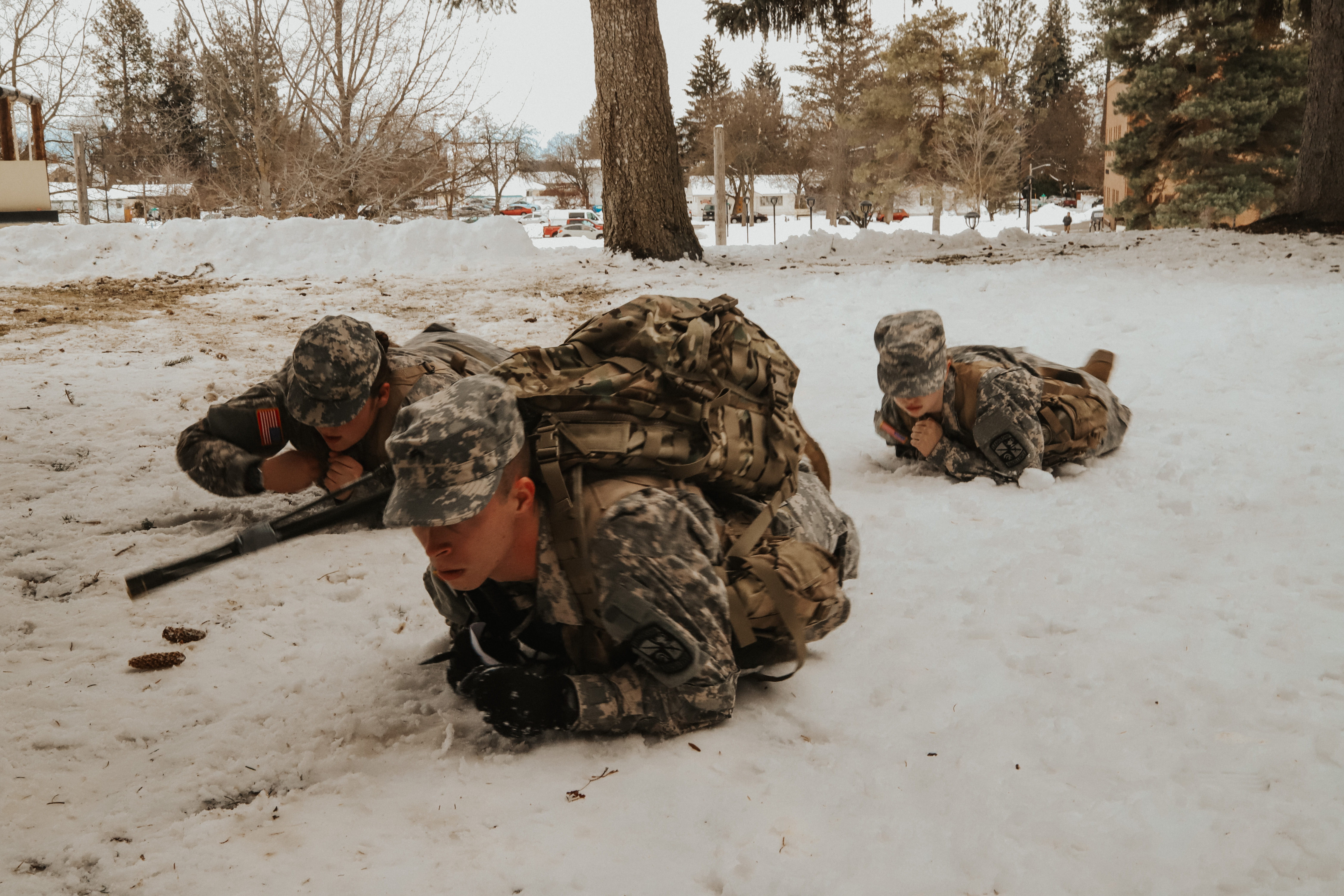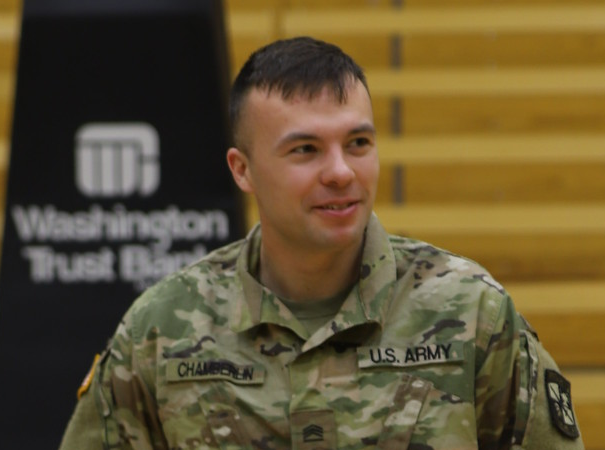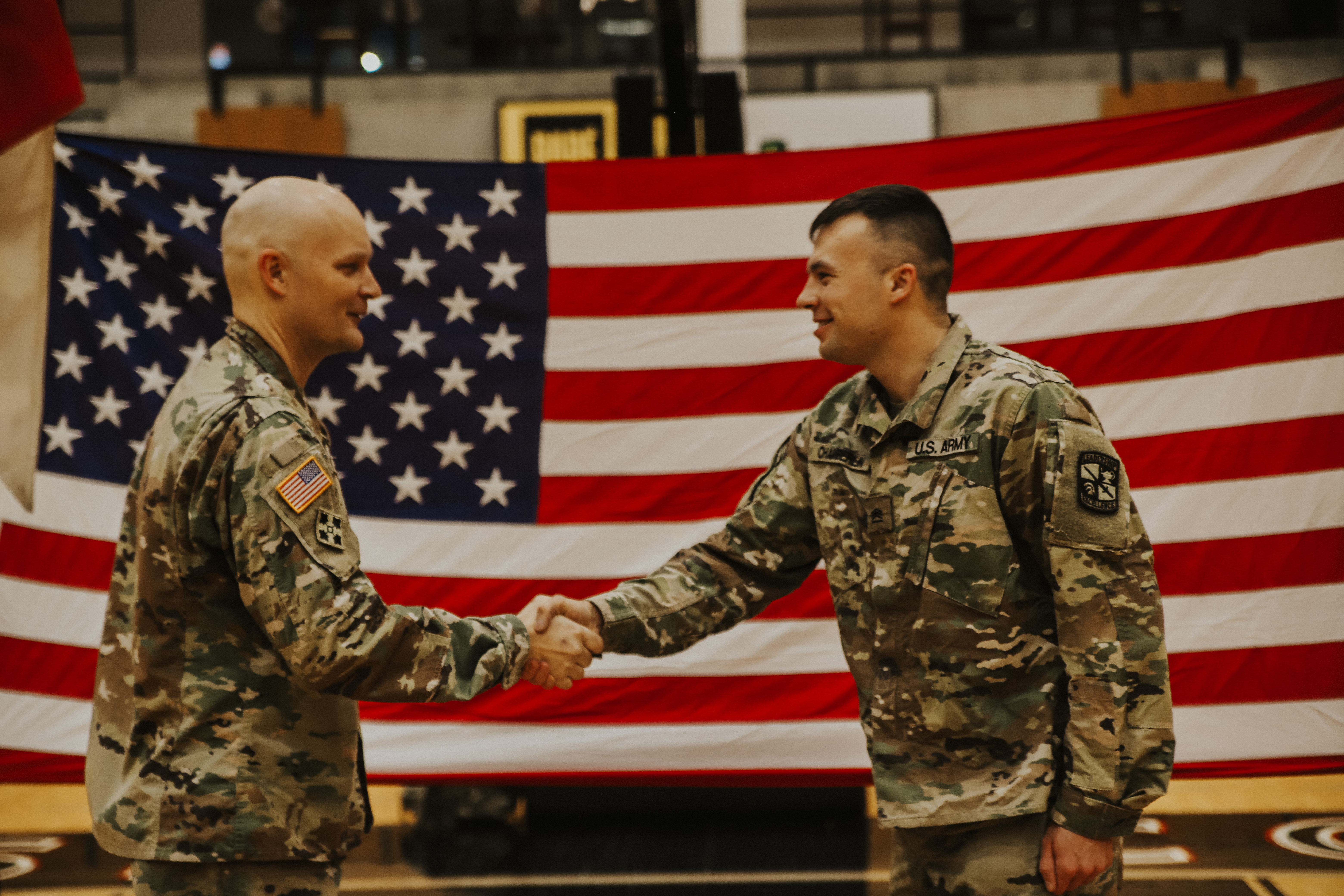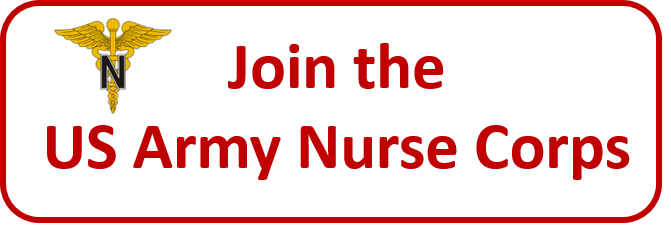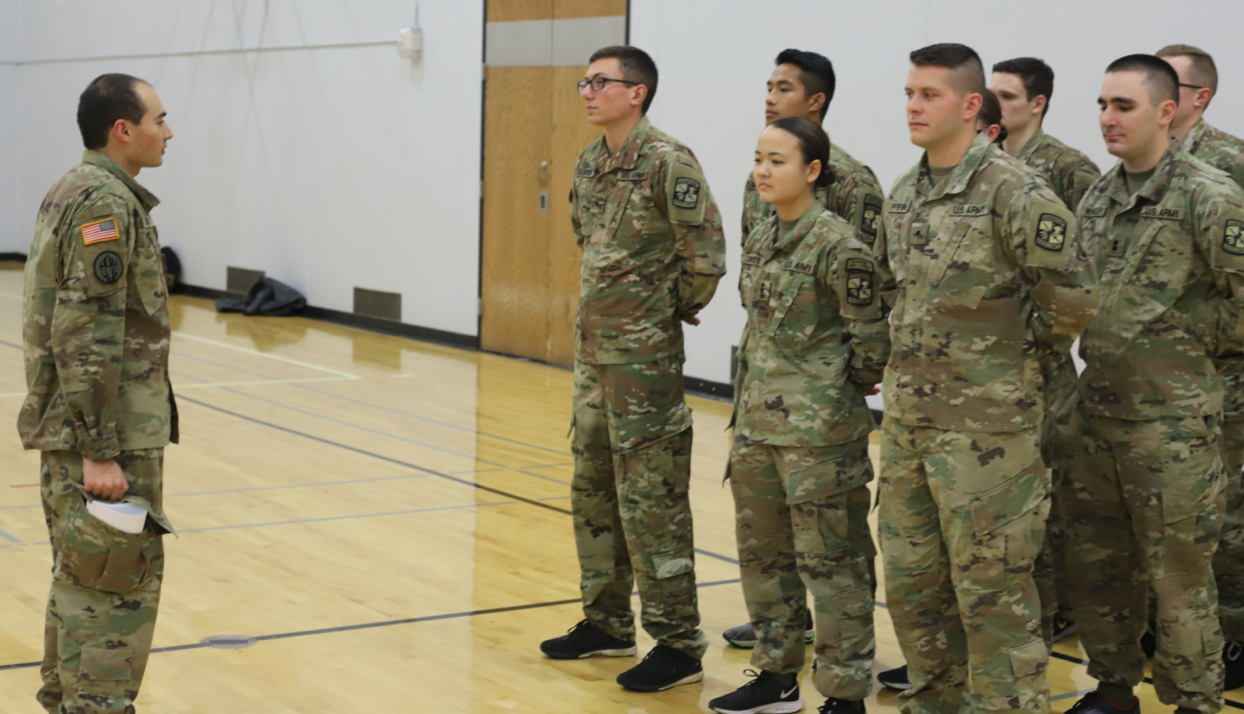By: Cadet Marcos Sanchez
On the 30th of January 2020, Eastern Washington University (EWU) Reserve Officer Training Corp (ROTC) Cadets were tested on their knowledge and proficiency of squad based, special team operations. These special team operations consist of Aid and Litter (A&L) and Enemy Prisoner of War (EPW) handling. A&L is a crucial task that must be performed accurately and efficiently, this team could be the line between life and death in real combat situations.

Proper handling of EPW’s is also vital for survival in live combat. Ensuring that the EPW is free of weapons that may cause harm to your squad is very important. Cadets are also instructed to search the prisoners for any priority intelligence information.

On top of training the special teams, Cadets were also able to get hands on experience with the M240B. The M240B is one of the US Military’s crew serve machine guns. Cadets will be using this while at Advanced Camp and Basic Camp this summer. That is why it is important for them to be proficient at mounting/dismounting it from a tripod, conduct a malfunction clearing, and loading rounds.

As the halfway mark of the quarter approaches, so does the winter field training exercise (FTX). During the FTX the MSIII class will be tested on their ability to lead a squad through multiple scenarios in a rigorous 24+ hour event. You can see more pictures from the lab at this link.
Go Fighting Eags!
